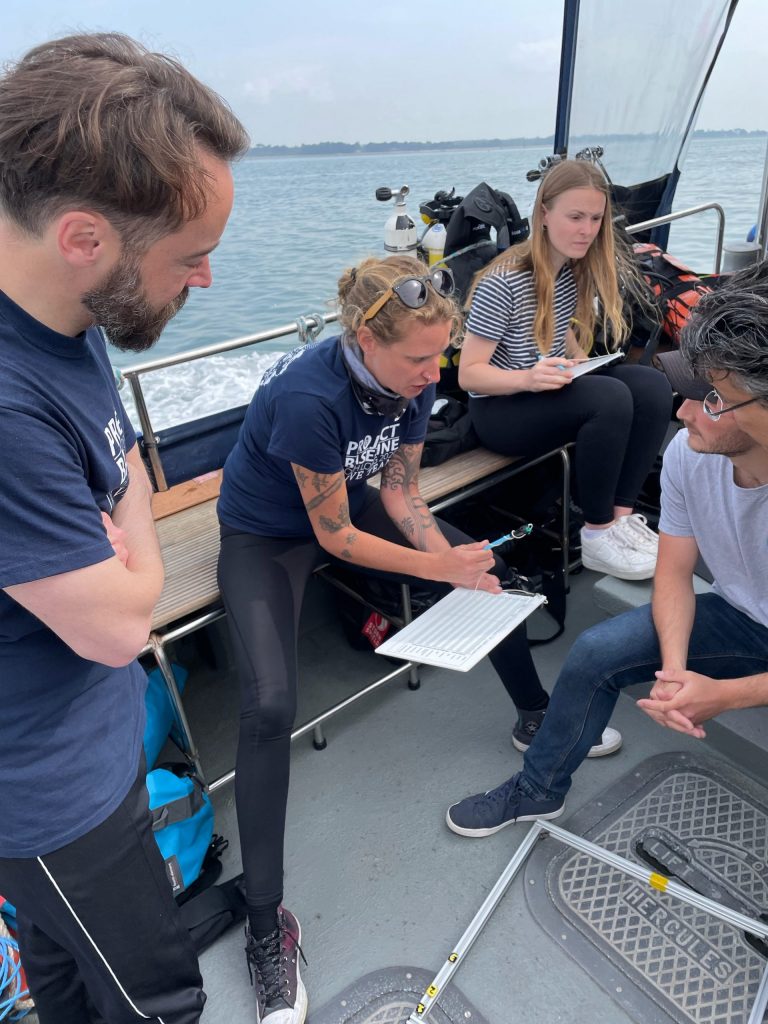I don’t know how many articles on carbon sequestration I’ve read during the past year’s lock-downs (clue – it’s a few…) but sometimes, as a non-scientist, it can be quite overwhelming to try and understand from the outside what your best course of action is to balance out the terrifying climate headlines.

As a diver newly returned to the UK shores, I was therefore pretty excited to network with the Project Baseline UK dive team and find out how I could best continue my education underwater. To be able to team up for two days with a seriously experienced squad of divers (thanks PB UK team!) and two inspiring marine scientists from Ocean Conservation Trust (thank you, Leah and Mark!) was a perfect opportunity.
In under an hour, we were no longer seven individuals but one team – and we were off out to survey the seagrass beds in the sunny Solent. Armed with our usual dive paraphernalia plus a set of quadrants, slates and 50m reels to measure out transects lines on our specified areas, we eagerly listened and learned about how to measure our sections and identify the precious strands of seeding seagrass.
Our task was to find and survey areas of pre-existing seagrass (Zostera marina) and count the amount of potentially usable seagrass seeds currently growing there. The teams from OCT and Natural England will then know where to return to later in the season – giving them a good chance of harvesting 3.2M of these seeds (this year’s goal) – seeds which can then be replanted in other areas of the coast to restore the seagrass meadows, helping to re-wild our seas and work towards balancing out some of this carbon which I’d been reading so much about when unable to get underwater.
You’d be forgiven for thinking that this could be quite an easy task – after all, seagrass thrives in shallow water where it can photosynthesis so it’s not like we were madly calculating bottom times for the dive teams. Never assume things will be easy though and despite being the shallowest dives most of us have ever actually done, when you’re in 2.5m of water in a drysuit, with the tide changing and the classic UK underwater visibility that we all love – and you’re manhandling your extra survey kit, well let’s just say I found it a wonderful challenge. But the great thing about this sort of project diving is the camaraderie and support you get from the rest of the team. A supportive learning environment smiles all round and knowing that you’re contributing useful data to a genuine cause gives a sense of purpose that really drives you to do your best and focus your attention.
Thank you so much to PB UK and OCT for enabling us to take action in these surveys and for a great two days! I can’t wait to hear more about how the project develops through the season and fingers crossed can join to harvest some seeds later this summer.
Article Author: Lindsey Ascott



